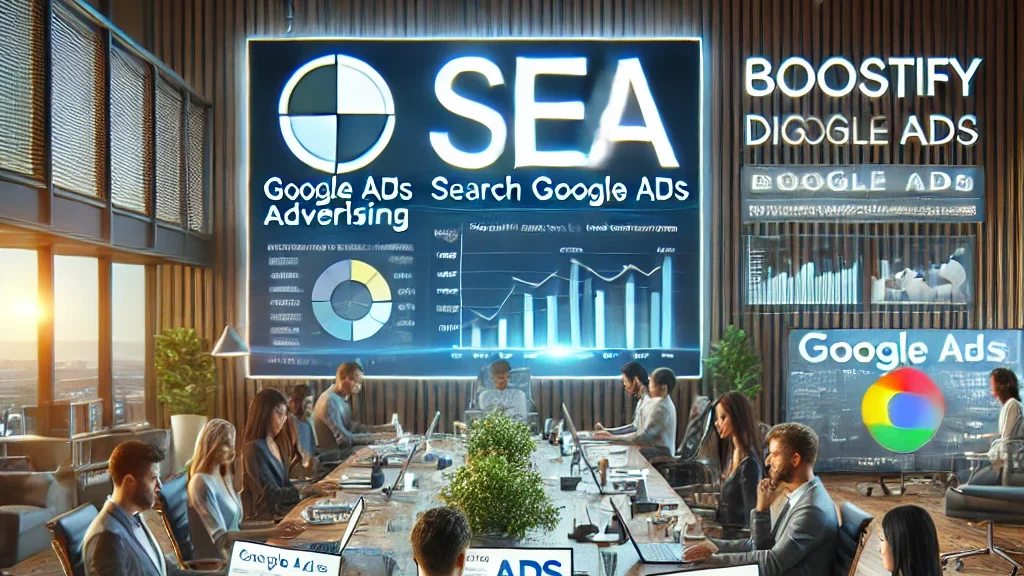Search Engine Advertising (SEA) offers a powerful way to place your brand directly in front of potential customers when they’re searching for what you offer.
As a highly targeted, pay-per-click (PPC) strategy, SEA ensures your business gains visibility at the precise moment it matters most.
But it’s not just about placing ads; it’s about using smart bidding strategies, crafting compelling ad copy, and optimizing landing pages for maximum conversions.
Whether your goal is to drive traffic, increase sales, or boost brand awareness, SEA can be a game changer in a competitive digital landscape.
What is Search Engine Advertising (SEA)?
Search Engine Advertising (SEA) involves placing paid ads on search engine result pages (SERPs) to promote products or services.
It’s a pay-per-click (PPC) model, where advertisers only pay when users click on their ads. SEA is an effective way to increase visibility and drive targeted traffic by appearing for specific search queries at the right moment.
How does SEA Work?
Search Engine Advertising (SEA) involves placing paid ads on search engine result pages (SERPs) to drive targeted traffic. Here’s how it works:
Keyword Selection
- Choose Relevant Keywords: Select keywords that match what your target audience is searching for.
- Keyword Tools: Use tools like Google Keyword Planner to find high-volume, low-competition keywords.
Bidding on Keywords
- Pay-Per-Click: SEA operates on a PPC model, where you pay when someone clicks your ad.
- Set Your Bid: Determine the maximum amount you’re willing to pay per click. Higher bids improve ad placement.
Ad Auction Process
- Quality Score: Search engines factor in the relevance of your ad and landing page, not just the bid amount.
- Ad Rank: Your Ad Rank is based on bid and quality score, affecting ad placement.
Ad Placement
- Position on SERP: Ads appear at the top or bottom of search results, labeled as “Sponsored” or “Ad.”
- Ad Extensions: These enhance your ads with extra details like phone numbers or additional site links.
User Clicks on Ads
- Landing Page: When users click on your ad, they are directed to your optimized landing page, where conversions are encouraged.
Tracking and Optimization
- Monitor Performance: Track key metrics like click-through rates (CTR) and conversions to optimize your campaign.
- Ongoing Adjustments: Refine your bids, keywords, and ad copy based on data for better results.
Budget Control
- Set a Budget: Determine your daily or monthly ad spend to control costs.
- Bid Strategies: Use manual or automated bidding to manage spending and optimize ad performance.
What are the types of SEA strategies and how they are implemented?
Keyword-Based Strategy
Definition:
This strategy focuses on targeting users by the specific words or phrases they type into search engines.
It’s the foundation of most SEA campaigns, as it aligns your ads with user intent at the moment they’re actively searching for related products or services.
Implementation:
- Conduct keyword research to identify high-performing search terms
- Use match types (exact, phrase, broad) for varying levels of targeting precision
- Apply negative keywords to filter out irrelevant queries
- Organize ad groups by keyword themes for better relevance and quality score
Geo-Targeting Strategy
Definition:
Geo-targeting involves serving ads to users based on their geographic location. This is ideal for local businesses or region-specific offers, ensuring your ads are shown where they matter most.
Implementation:
- Set target areas (countries, cities, zip codes, or custom radiuses)
- Customize ad copy to highlight local appeal
- Increase bids for high-performing regions, decrease for low-performing ones
- Exclude irrelevant or underperforming locations to refine reach
Device Targeting Strategy
Definition:
This strategy adapts your ad delivery based on the user’s device—desktop, mobile, or tablet. It helps optimize the user experience and bidding strategy for each platform.
Implementation:
- Analyze device performance data and segment audiences accordingly
- Adjust bids per device type to maximize return
- Create mobile-optimized landing pages for mobile users
- Use device-specific ad creatives where appropriate
Demographic Targeting Strategy
Definition:
Demographic targeting allows advertisers to show ads to specific age groups, genders, income levels, or parental statuses ; helpful for campaigns aimed at well-defined customer segments.
Implementation:
- Use audience data to define ideal demographics
- Adjust bids for segments more likely to convert
- Exclude irrelevant demographics to avoid wasted spend
- Personalize ad messaging to match user profiles
Remarketing Strategy
Definition:
Remarketing targets users who have previously visited your site or interacted with your brand. It keeps your business top-of-mind and encourages return visits and conversions.
Implementation:
- Set up remarketing tags on your website
- Segment audiences based on behavior (e.g., product views, cart abandonment)
- Serve tailored ads to re-engage potential customers
- Adjust frequency caps to avoid overexposure
Time-Based (Dayparting) Strategy
Definition:
This strategy involves showing ads only during specific days or hours, aligning your campaigns with peak engagement or business hours.
Implementation:
- Analyze performance data to identify high-converting time slots
- Schedule ads to run during these optimal periods
- Lower bids or pause ads during low-performing hours
- Test different time settings regularly for performance shifts
Shopping Ad Strategy
Definition:
Focused on promoting physical products directly in search results with visuals, pricing, and store info. Ideal for e-commerce businesses.
Implementation:
- Set up and optimize a product feed via Google Merchant Center
- Group products logically into campaigns and ad groups
- Use custom labels for better control over product bidding
- Monitor product performance and adjust bids accordingly
Maximizing Your Search Impact
Search Engine Advertising offers fast, targeted visibility and measurable results. Combined with SEO, it creates a balanced strategy that drives both quick wins and lasting growth. With the right execution ; and expert support from agencies like Boostify, SEA becomes a powerful tool for digital success.
